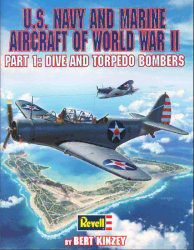
U.S. Navy and Marine Aircraft of World War II (1): Dive and Torpedo Bombers PDF
50 Pages·26.636 MB·English
Most books are stored in the elastic cloud where traffic is expensive. For this reason, we have a limit on daily download.
Preview U.S. Navy and Marine Aircraft of World War II (1): Dive and Torpedo Bombers
Description:
U.S. Navy and Marine Aircraft of World War II (1): Dive and Torpedo Bombers КНИГИ ;ВОЕННАЯ ИСТОРИЯ U.S. Navy and Marine Aircraft of World War II (1): Dive and Torpedo BombersByBert KinzeyPublisher: Revelle Monogram200350 PagesISBN: 0970990057PDF18 MBWhen the Japanese attacked Pearl Harbor, two Navy squadrons and one Marine squadron were still equipped with the Curtiss SBC Helldiver. This would be the last American biplane to be assigned to front line combat units. (NMNA)In 1922, the U. S. Navy converted the collier USS JUPITER to its first aircraft carrier and renamed the ship USS LANGLEY. Designated CV-1, LANGLEY became a test bed for the development of equipment, operating procedures, and aircraft that would be used on the subsequent aircraft carriers. Landing an aircraft on a moving ship was no easy task to start with, but once it touched down on the flight deck, the best way to bring it to a safe stop was even more difficult to determine. Not only did the Navy have to develop arresting gear, catapults, and aircraft elevators, among many other details and concepts, it had to decide what types of aircraft would be assigned to its air groups. At that time, the Navy believed that the aircraft would be used as scouts to search for threats beyond the visual range of the fleet. If a threat was located, it would certainly be in the form of enemy ships, so other aircraft had to be included in the carrier's air group to attack those ships. Finally, assuming that other navies would develop aircraft carriers, the Navy realized that fighter aircraft would be needed to protect the fleet from both shipboard and land-based aircraft. sharingmatrix 0
See more
The list of books you might like
Most books are stored in the elastic cloud where traffic is expensive. For this reason, we have a limit on daily download.
